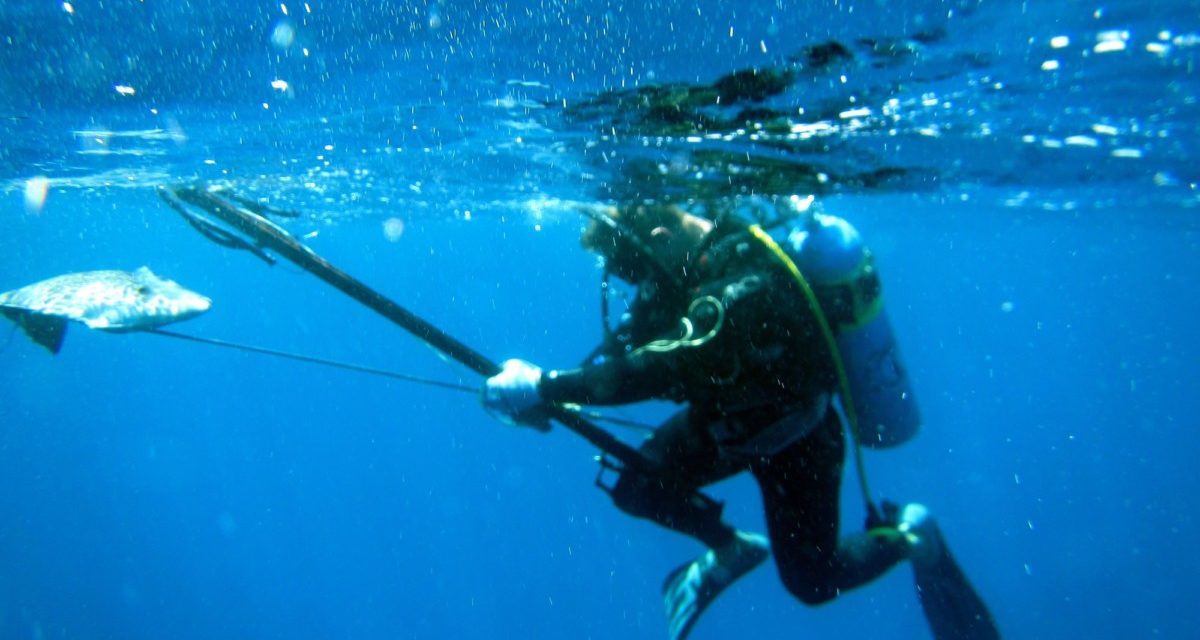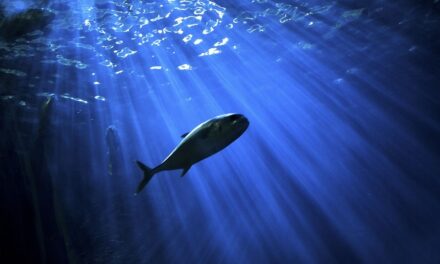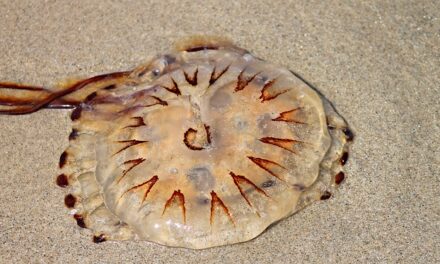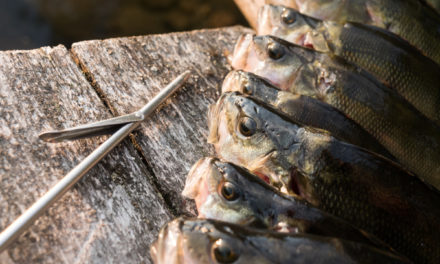Are you wondering what kind of fish you should be going for when spearfishing? Read on to learn about the best fish.
Have you ever speared a fish that turns out to taste like trash? Spearfishing is so much better when you know what to hunt. There are plenty of great tasting, widely available fish to hunt, but which is the best fish to spearfish?
Don’t waste your spears on fish that taste bad or are prohibited from hunting. This is your complete guide for advancing your knowledge on the best fish to hunt and where to find them when spearfishing.
The ocean is home to countless fish and marine life species that you can spearfish. But, the best fish to spearfish include a select group of species. Some of them are great for beginners, and some should only be hunted by experts.
Whatever your skill level, learning to identify your prey is the best way to hone your intermediate spearfishing skills.
Your Complete Guide: What You Need for Spearfishing
In order to catch the best fish, you need the right gear. Spearfishing is a sport that relies heavily on gear. After all, underwater is not a humans natural environment,
The success of your hunt depends on your spearfishing skill and your hunting safety. Here are the basics things you need in order to spearfish successfully:
Spearfishing License
If you don’t have a spearfishing license, you can’t hunt. So, be sure to register and pay for your license wherever it is you plan on spearfishing.
Licensing is where you will become aware of the marine life which is prohibited from hunting as well as the proper safety procedures while diving. For example, common wetsuits and scuba gear are not permissible for spearfishing in some states.
Basic Gear
The basic spearfishing gear includes a diving suit, snorkel, dive mask, fins, and spear. Without these basic pieces of gear, you cannot effectively hunt the best fish in the water.
Your wetsuit is protection from the cold waters and sharp objects. Sharp things abound in the water. Corral, rocks, and broken glass is just as dangerous as jellyfish.
Use an anti-fogging dive mask and a high-quality snorkel. A flimsy snorkel gets in your way as you swim and hunt.
Spearfishing requires special diving fins. Spearfishing fins are long and thin, which allows for maximum stability in the water.
Your spear is the most important tool for a spearfisher. Pole spears and 2-band wooden spear guns are good for beginners.
Advanced Spearfishing Gear
Dive gloves and booties are must-have pieces of gear for divers that hunt in deeper water. As you go deeper the water’s temperature decreases. So, gloves and booties help retain your body temperature and keep you from getting hypothermia.
As you become a more advanced spearfisher you have more need of a weight belt. A weight belt is also essential for hunting deepwater fish. A weight belt allows you to swim to deeper waters and provides a safe place to tether your catch.
Finally, a diving knife is a staple for any serious diver. The water is full of seaweed, rope, and line that can get tangled around you as you hunt. A knife is also important to be able to untether your catch if you need to make a quick escape.
Types of Fish for Spearfishing
The types of fish that you can hunt depend on where you are hunting. On the East coast of the United States, marine life is quite different than on the West coast. But, no matter where you are spearfishing, these are the types of marine species you will come across:
Reef Fish
Coral reefs are home to the largest variety of marine species anywhere in the oceans of the world. Reefs give spearfishers their pick of some of the most choice fish species for eating. Reef fish are great for beginners and expert spearfishers, thanks to the wide variety of fish therein.
Pelagics
Pelagic fish are the game fish of the spear hunting world. Hunting these fish pushes spearfishers to the brink of their abilities. These coastal and oceanic fish are found in sunlit water, down to around 650 feet below the waves.
Some of the most notably large pelagics include swordfish, sharks, and tuna. These are some of the best fish for swordfish.
Weedline Fish
The majority of fish swim in the reef or the open water, but there is a middle ground. At some point, every fish makes its way through the weedline or middle-ground between the reef and open ocean. And some fish spend more time in the weedline than others.
Some of the choicest fish in the weedline are sharks, kingies, and snapper.
Tropical Fish
The tropics are home to the widest variety of marine life anywhere on earth. Tropical fish swim in clear, warm waters. Tropical waters are excellent for spearfishers, thanks to the crystal clear visibility.
But tropical waters are home to some of the most challenging fish to spearfish.
Fresh Water Fish
The world’s fresh water is also home to a wide variety of marine life which is perfect for spearfishing. The lakes and rivers of North America are home to catfish, salmon, carp, and bass. You don’t have to live near the ocean t catch some of the best fish for eating.
Non-target Fish
Non-target fish are those which are protected from hunting, or that are not considered to be good for eating. Some non-target fish are poisonous, but most just taste bad. Non-target fish also includes dangerous fish, like sharks.
What Are the Best Fish to Spearfish?
Spearfishing is a fun thing to spend your time doing, and, if you are successful, it provides a meal. It takes some time to study and learn the best fish to hunt. Eventually, you will recognize choice species in the midst of your dive.
But, for starters, follow this guide and you are sure to have a tasty meal. Here is your complete cheat sheet to the best fish for spearfishing:
Barracuda
Barracuda swim in the waters around Key West, off the coast of Florida in the Southeast United States. Barracuda are agile, fast swimmers that feed on large schools of little fish. Barracuda can grow up to 6 feet long and weigh up to 80 pounds.
Grouper
Grouper is good prey for spearfishing. This meaty, bulky fish can grow to weigh up to around 800 pounds and measure eight feet from nose to tail. Grouper swims in the coastal waters off the Eastern United States.
If you are ready for a challenging hunt, grouper will not let you down. And, you’re in for a tasty meal afterward.
Snapper
Snapper is one of the most sought-after fish that swims in the waters of Key West. Snapper is delicious and nutritious, thanks to the Snapper’s carnivorous diet. But that means that snapper have sharp teeth, so be careful.
Snapper is identifiable by their uniquely fork-shaped tail and pointy teeth.
Hogfish
Hogfish is a go-to species for new spearfishers. They like to lay around on the rocky bottom of open sea floors and graze on smaller coral fish around the reefs. They are not particularly fast swimmers, which is great for beginning target practice.
Swordfish
On the other hand, swordfish is one of the most prized species for a spearfisher but also the most difficult to catch. These fish grow up to seven feet long and weigh around 200 pounds.
The toughest part to spearing a swordfish is that they are nocturnal and live in deep waters. So, if you are hunting swordfish in Key West, add a flashlight to your dive gear.
Yellowtail
On the other side of the country, the coast of California is home to the yellowtail. The species congregate just off of the shoreline, which makes for easy tracking. But, once you dive in after them, the yellowtail won’t give it up without a fight.
Whitefish
Whitefish are found swimming in the Southern California Pacific coast. They look like a little version of the yellowtail but are more easily startled. Hunting white fish involves stealth and quick thinking.
Halibut
Halibut swim a wide range of Westcoast waters and is a favorite of spearfishers. You can hunt halibut as far South as Mexico, and as far North as Oregon and Canada.
Halibut is a great fish for intermediate spearfishers because it is easy to follow down to its maximum depth of around 80 feet. They are bulky, muscley fish that weigh up to 35-pounds and can really put up a fight. If you have a spear pole with a real, halibut is a great species to start out with.
Kumu
Kumu or white saddle goatfish is perfect for beginner spearfishers to get their bearings. It also tastes great for dinner. These fish grow to around a foot long, or just over a foot.
Kuma sit and stare at you for a moment before fleeing, which makes them a great target. The trick for catching Kuma is to sneak up behind them and fire your speargun at a 45-degree angle to their head.
Kumus are bottom-feeders, but some of the larger ones swim around the tops of reefs. For the most part, they swim under the reef and rocks.
Kole Tang
Kole Tang is known for its delicious taste and wide availability in warm waters. Kole tang swims in schools, so when you find one, you find a lot. They stay around the reefs and are easy targets for beginners, or for an easy meal.
Striped Mullet
Striped Mullet is a freshwater fish, that swims in bays, river mouths, and riverways. As long as you make a slow approach, the striped mullet remains docile. Once nighttime falls, the striped mullet goes into a trance-like sleep, in which it continues to swim.
So, It is not exactly like shooting fish in a barrel-more like shooting fish while they are asleep. The ease of hunting the striped mullet makes it one of the best fish for target practice.
Bullethead Parrotfish
The bullethead parrotfish has bright, expressive colors and a delicious taste, which makes it one of the most prized species around coral reefs. These fish are best to hunt at night for intermediate divers. The fish is easier to approach at night because of its limited visibility.
In the daytime, the bullethead parrotfish requires some stealth and patience. The trick is to catch it unaware. Most expert spearfishers will spend time stalking the fish around the reef, then cut it off unaware.
Spearfishing Safety Plan
No matter the difficulty of your dive or the ease of your prey, always follow some basic safety procedures before you hunt.
Spearfishing is inherently dangerous because it involves remaining underwater for extended periods of time. So, to make sure that you and your dive partner are always safe…
Don’t Hunt Alone
Spearfishers always go spearfishing with a buddy. Your buddy is your most important lifeline in the event of a diving accident. Never go spearfishing alone because no one will know if an accident happens.
Plan Your Dive
Make a plan and stick to it. If your dive plan has to change in the middle of your dive, make sure you communicate with your dive partner above water. The time and spot in which you spearfish depend on what you are fishing for and the tide calendar.
Plan your dive at low tide, when the water is less tumultuous. And, if you are diving at night, bring plenty of underwater illumination.
Share Your Dive Plan
Before you go on your dive, give a copy of your dive plan to a trusted individual. Your dive plan should outline a timetable for when you will leave when you will dive, and when you will return.
If you fail to notify your individual of the completion of your dive, they will contact the authorities about a possible diving accident.
Want More?
Knowing more about the prey you are hunting enables better safety procedures and a more efficient hunt. There are more fish in the ocean than leaves on a tree, and plenty of them are good for fishing. But, the species on this list constitute the best fish to hunt while spearfishing.
If you like this guide on the best fish to spearfish share it with your friends on social media. And subscribe to our newsletter to receive the latest posts on spearfishing around the world. Thanks for reading!






